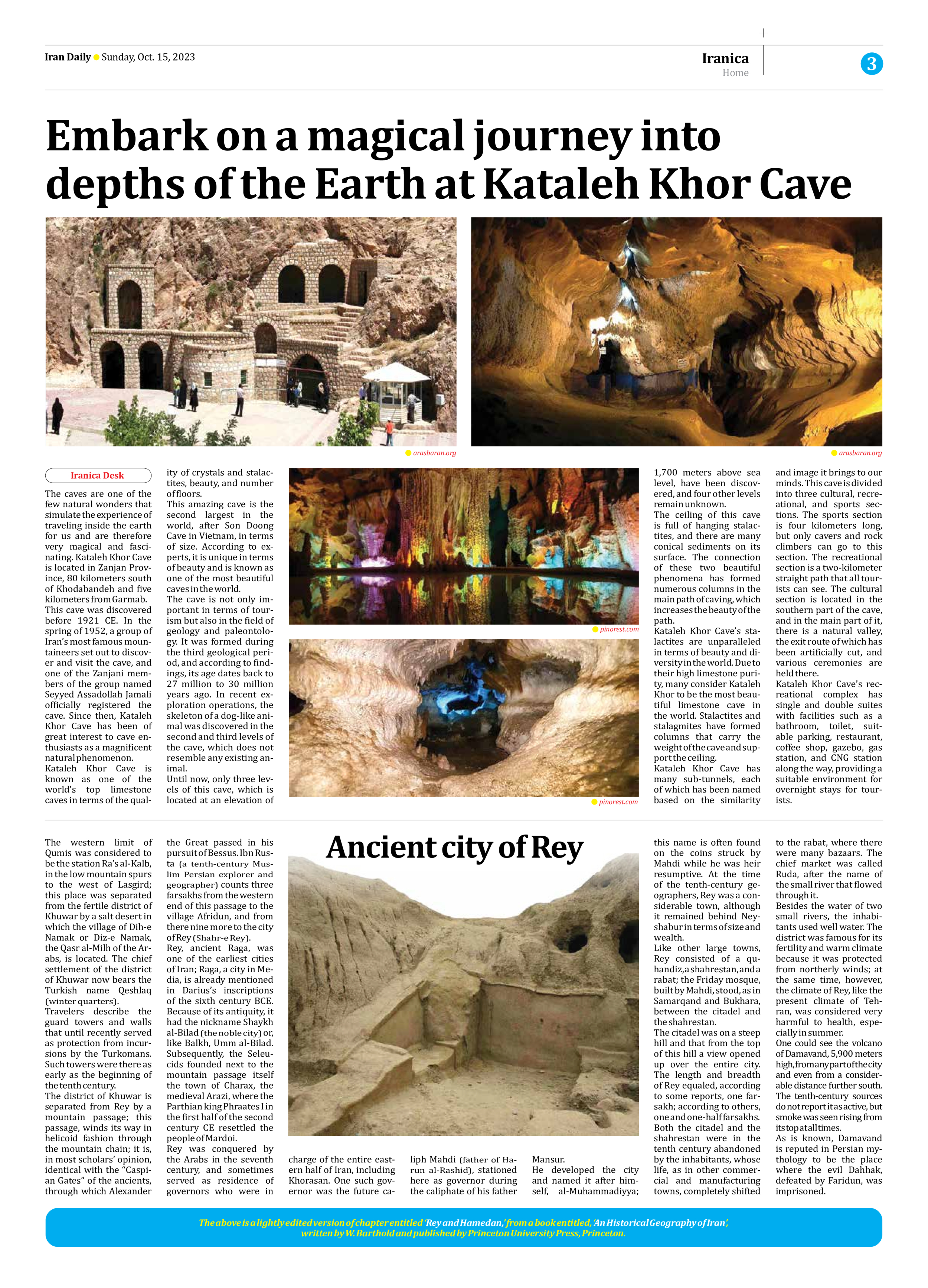
Ancient city of Rey
The western limit of Qumis was considered to be the station Ra’s al-Kalb, in the low mountain spurs to the west of Lasgird; this place was separated from the fertile district of Khuwar by a salt desert in which the village of Dih-e Namak or Diz-e Namak, the Qasr al-Milh of the Arabs, is located. The chief settlement of the district of Khuwar now bears the Turkish name Qeshlaq (winter quarters).
Travelers describe the guard towers and walls that until recently served as protection from incursions by the Turkomans. Such towers were there as early as the beginning of the tenth century.
The district of Khuwar is separated from Rey by a mountain passage; this passage, winds its way in helicoid fashion through the mountain chain; it is, in most scholars’ opinion, identical with the “Caspian Gates” of the ancients, through which Alexander the Great passed in his pursuit of Bessus. Ibn Rusta (a tenth-century Muslim Persian explorer and geographer) counts three farsakhs from the western end of this passage to the village Afridun, and from there nine more to the city of Rey (Shahr-e Rey).
Rey, ancient Raga, was one of the earliest cities of Iran; Raga, a city in Media, is already mentioned in Darius’s inscriptions of the sixth century BCE. Because of its antiquity, it had the nickname Shaykh al-Bilad (the noble city) or, like Balkh, Umm al-Bilad. Subsequently, the Seleucids founded next to the mountain passage itself the town of Charax, the medieval Arazi, where the Parthian king Phraates I in the first half of the second century CE resettled the people of Mardoi.
Rey was conquered by the Arabs in the seventh century, and sometimes served as residence of governors who were in charge of the entire eastern half of Iran, including Khorasan. One such governor was the future caliph Mahdi (father of Harun al-Rashid), stationed here as governor during the caliphate of his father Mansur.
He developed the city and named it after himself, al-Muhammadiyya; this name is often found on the coins struck by Mahdi while he was heir resumptive. At the time of the tenth-century geographers, Rey was a considerable town, although it remained behind Neyshabur in terms of size and wealth.
Like other large towns, Rey consisted of a quhandiz, a shahrestan, and a rabat; the Friday mosque, built by Mahdi, stood, as in Samarqand and Bukhara, between the citadel and the shahrestan.
The citadel was on a steep hill and that from the top of this hill a view opened up over the entire city. The length and breadth of Rey equaled, according to some reports, one farsakh; according to others, one and one-half farsakhs.
Both the citadel and the shahrestan were in the tenth century abandoned by the inhabitants, whose life, as in other commercial and manufacturing towns, completely shifted to the rabat, where there were many bazaars. The chief market was called Ruda, after the name of the small river that flowed through it.
Besides the water of two small rivers, the inhabitants used well water. The district was famous for its fertility and warm climate because it was protected from northerly winds; at the same time, however, the climate of Rey, like the present climate of Tehran, was considered very harmful to health, especially in summer.
One could see the volcano of Damavand, 5,900 meters high, from any part of the city and even from a considerable distance further south. The tenth-century sources do not report it as active, but smoke was seen rising from its top at all times.
As is known, Damavand is reputed in Persian mythology to be the place where the evil Dahhak, defeated by Faridun, was imprisoned.
The above is a lightly edited version of chapter entitled ‘Rey and Hamedan,’ from a book entitled, ‘An Historical Geography of Iran’,
written by W. Barthold and published by Princeton University Press, Princeton.







